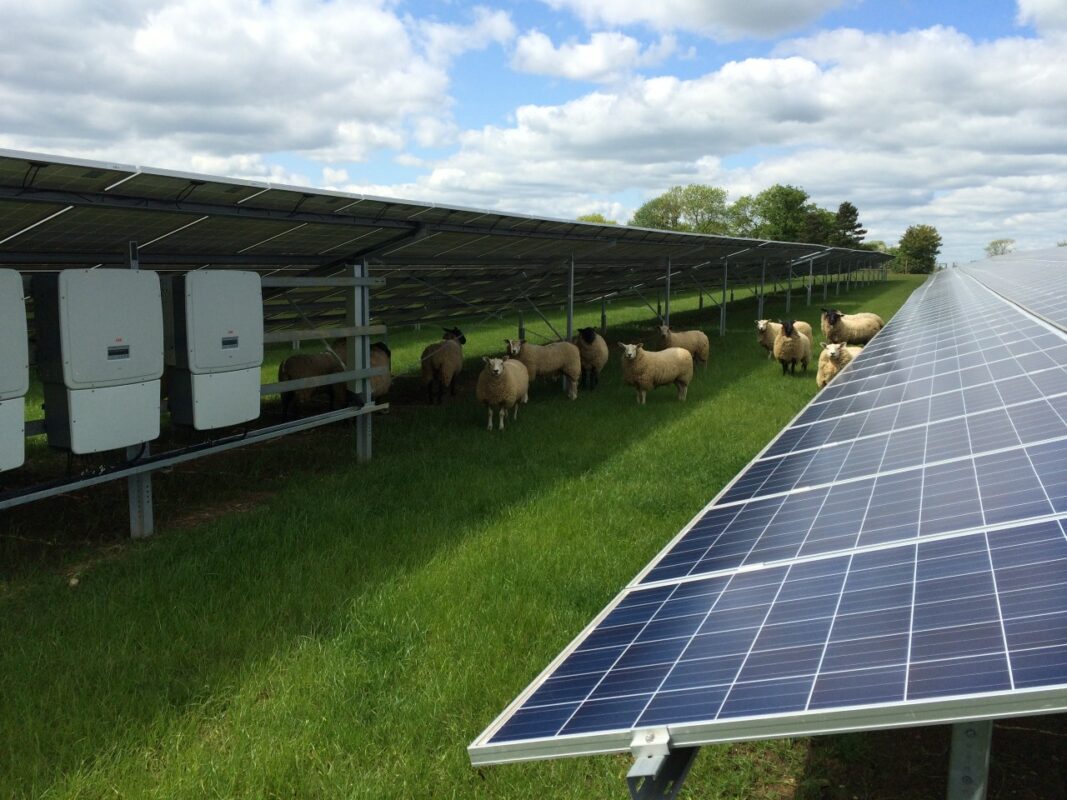
Around 32% of farms had a solar installation in 2021. Image: BayWa_r.e.
Farmers without solar panels could miss out on up to £1 billion over the next two years, according to new research from the Energy and Climate Intelligence Unit (ECIU).
Currently, 22% of farmers in England have solar, leaving many very exposed to power price volatility.
Government figures show that farming and other businesses paid 98% more for gas in the second quarter of 2022 than in the same period the previous year, and 45% more for electricity. Gas prices are set to remain high for at least two years, with many predicting above average prices out till 2030.
If the 78% of farmers without solar were to adopt it, over the next two years their energy savings and the potential revenue they could generate from the installation could be up to £1 billion. This would almost balance out the increase in fertiliser costs, which are estimated to be £1.1 billion over the next two years.
Additionally, it would help save the government hundreds of millions of pounds on its Energy Bill Relief Scheme support package, which came into force at the beginning of October, capping businesses' energy bills at £211/MWh for electricity and £75/MWh for gas.
The research follows news that the government is still considering the expansion of the Best and Most Versatile (BMV) land to include that categorised as 3b.
Former environmental secretary Ranil Jayawardena first suggested the review of land use in October, and was roundly criticised by the solar sector, as it would significantly impact the land available for the development of the clean energy technology in the middle of an energy crisis.
Now his successor Thérèse Coffey has said that the review will continue, which could lead to the planning presumption against solar that is currently applicable to BMV land – that grade 1-3a – applied to 3b, acting as a de facto ban on the development of solar on such sites.
In the UK, land is categorised as 1-5, with a number of subsections, within the Agricultural Land Classification (ACL) scheme. Grade 1 is considered excellent quality agricultural land, best for growing fruit and salad crops for example, whilst Grade 5 is very poor quality agricultural land, suitable mainly for just permanent pasture or rough grazing.
Grade 3b denotes moderate quality agricultural land, suitable for supporting moderate yields of a narrow range of crops, principally cereals and grass.
Currently, the majority of solar farms are developed on land that is designated as 3b. As such, the extension of the BMV categorisation to 3b would effectively ban solar from around 41% of land in England, or about 58% of agricultural land.
“Farmers are being hit by a double whammy of rising energy costs due to the surge in the gas price, and record prices for synthetic fertilisers which are made using gas,” said Matt Williams, climate and land programme lead at the ECIU.
“On top of that many are losing income as crops fail due to extreme weather driven by climate change. Some are choosing to leave the industry altogether as a result.”
Additionally, the ECIU has undertaken polling to establish the support for solar in local communities versus the expectations of politicians. It found that 60% of people would “think less” of their local MP if they campaigned against the development of solar farms in the area.
Separate polling found that 32% of MPs think more people in the constituency would support rather than oppose a new solar farm.
Conservative MPs are more likely to expect opposition to a solar farm, with 37% believing opposition is higher among their constituents than support. Just 19% of Conservative MPs think more constituents would support a solar farm.
Labour MPs think around half (49%) of their constituents would support a solar farm, and 12% think their constituents would likely oppose one.
Polling from the Department for Business Energy and Industrial Strategy (BEIS) over the summer however found over 80% of people would support a solar farm being built in their area.
“As gas prices rocket some farmers’ energy bills have gone through the roof,” said Robbie Moore, Member of Parliament for Keighley and Ilkley.
“Having come from a farming background I know how much of a challenge unexpected extra costs can be. One of the best solutions is to have more renewables on farms. As long as care is taken to avoid land that’s needed to produce food they can help cut bills, bring in extra income, and achieve net zero.”
Renewables such as solar offer a clear path to help farmers both decarbonise their operations, protect themselves from volatile power prices and present a revenue opportunity. In many cases, it is even possible to transition glasshouses used for growing fruit and vegetables to heat pumps that use waste heat or renewable electricity, cutting down dependency on natural gas.
However, while from 2014 to 2016 the percentage of farms with renewables grew from 18% to 29%, this has since slowed, reaching only 32% in 2021.

